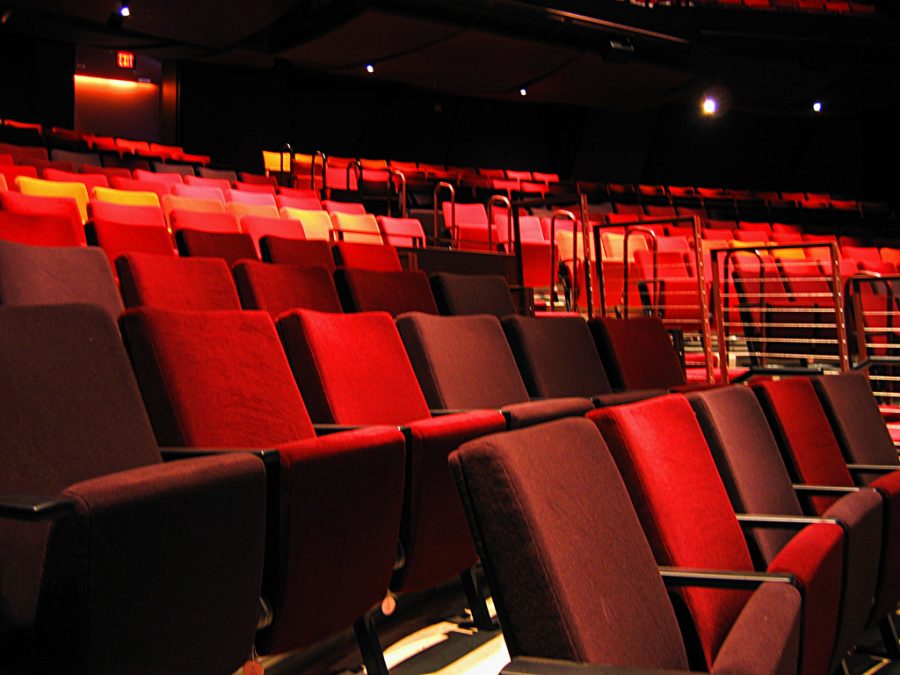Attracting Young People: Do Older Art forms Need Updating?
March Issue
Many ‘older’ artforms are seeing smaller and smaller audiences; is change necessary to attract a younger audience?
March 5, 2017
When was the last time you were at an art museum? Any museum? How about theatre; have you ever seen an opera? In 2012, the percentage of adults visiting a museum or art gallery reached the lowest level recorded over more than three decades. From 2010 to 2011, opera companies saw a 15 percent drop in attendance. Attend any theater today, and you’ll find yourself surrounded by a swarm of silver-haired audience members. Obviously, the traditional entertainment industry is struggling to connect to new audiences. In response to increasing economic pressures, many organizations have launched efforts to appeal to new generations by revamping their content with 21st century makeovers, hoping to attract modern consumers and stay afloat.
Around the world, museums have given exhibits digital facelifts in an effort to entice modern consumers. The Renwick’s recent exhibit, “Wonder”, capitalizes on audience’s snap-happy tendencies by installing awe-inspiring, colorful installations specifically designed for the perfect Instagram picture. The result? “Wonder” drew more visitors to the Renwick in six weeks than the museum had received the entire previous year. Other artists attempt to incorporate technology directly into their work through experimenting with new media and even virtual reality, adding new dimensions and levels of experience to audiences. Instead of fighting against the rise of the digital age, many museums have embraced it by hanging up QR codes next to exhibits for more information or by digitizing entire collections so anyone around the world can see famous works up close.
Opera has had a difficult time adjusting to the new technology-centered culture. Where visual art can often be updated or made more appealing to newer audiences, opera houses face challenges adjusting to a culture increasingly devoid of opera. In response, some operas have created “tweet seats,” which allow and even encourage audience members to live-share their experience online. However, the practice is not for everyone, as Alex Roe, artistic director of the Metropolitan Playhouse in NYC said in an interview with NPR: “Part of the whole theatrical experience is the thought of being present in the company of the rest of the audience and the actors… to me, the thought of encouraging people to tweet during a performance is necessarily a violation of that agreement.”
Less intrusive methods to engage audiences online include backstage insights through performers’ Instagrams or Twitter accounts: “Many of the posts are funny and it shows a lighter side of the opera world — Opera can be cool too,” explained Joslyn Gardner ’16, a WFS alumna and opera enthusiast currently studying at Pomona.
Opera also struggles to expand in the cultural scene due to its history of traditionalism, and the hesitancy of opera-goers to embrace new artists or interpretations. “Critics worry the modernization of opera can sometimes push a certain interpretation, and the integrity of the opera is being sacrificed for younger audiences,” offered Gardner, “I believe it’s important to have a mixture of both modernized operas and classical operas so the historical practice isn’t lost, and the conveying of the human experience remains relevant.” The reluctance of many viewers to share Gardner’s open-mindedness and part with their treasured masterpieces could pull the artform down.
While innovations within entertainment industries may be drawing greater crowds, some people question valuing sensationalist exhibits over traditional, high-quality art. An anonymous student described her thoughts: “Recently, I saw an exhibit of art made with 3D printers; it got a lot of attention, but I wondered, is the flashy medium compromising the quality of the art? At this stage, is it art, or is it marketing?”
Some also feel that, with lots of hype generated around exhibits incorporating digital links or trendy themes, more traditional forms of art are being neglected and undervalued: “The common assumption about traditional art is that it’s outdated, but there are so many different types of art forms. You really have to go out and experience them before making blanket assumptions,” claimed Emily Rossi ’17.
However, many people see such changes as a sign of artistic progression, in which artists adapt to new audiences as they have countless times before throughout history: “I think this innovation is great because artists are bringing in a new era of art, with new adapted styles and media for the new audiences and times,” said Casey Tyler ’19.
Many in the art world seem willing to compromise, in the interest of drawing audiences into an artistic culture: “I think reaching out to young people is important, and hopefully it’ll go further than just offering entertainment; what’s really important is forming an association with an art culture,” mused Cynthia Stan-Mellow, art teacher. “I think for both art museums and theatres, you can alway mix the historic pieces everyone knows with exhibits that incorporate more modern elements; what’s really important is that you encourage kids to connect with art from an early age so we don’t lose that appreciation for art in our culture,” agreed Rossi.
Ultimately, art has always fluctuated depending on how its audiences engage with it. “Art needs to evolve, and art has evolved; it’s only important that things change for art’s sake, not for money’s sake. If you’re changing art to improve it sure- but I don’t approve of just catering to a paying audience,” declared an anonymous student.
Almost certainly, the discussion about art and the many forms it can take will continue, as it has since art was first began on cave walls. For centuries, art has been a way for people to connect, inspire, communicate, and share — and that’s something that certainly won’t be changing anytime soon.































